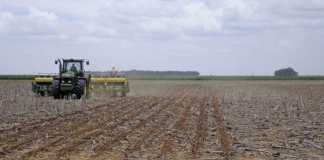He said that maize producers found it increasingly difficult to obtain production credit. In addition, high input costs and the drought in the western production region compromised the long-term sustainability and profitability of grain production. “Food security in SA is at a tipping point. Grain producers find it increasingly hard to produce maize, a fact that SA society seems blissfully unaware of.”
Steytler said the drought in the western region could have an impact on the 2013/2014 maize harvest. “The situation is exacerbated because irrigation farmers also find it difficult to continue with exorbitant electricity prices and the possibility of load shedding. We simply don’t have the capacity to absorb those costs.”
Santam Agriculture’s Northern Free State regional manager, Cobus Claassens, said that about 70% of grain producers in the western parts of the province’s grain production areas had finished planting or were currently planting. However, his counterpart in North West, Callie Buitendag, said few farmers in the western parts of the province had started planting.
“We’ve had reports of good rains in Leeudoornstad and Lichtenburg over the weekend of 2 December, but there are still areas that have had no rain, such as Delareyville, Christiana and Bloemhof. The last planting date for maize in the province is 25 December and for sunflowers, 20 January,” he said.
The National Crop Estimates Committee announced a commercial maize crop of 11,69 million tons, 32 550t or 0,28% less than the September estimate of 11,72 million tons. The recalculated white maize crop is 5,54 million tons, 0,63% or 35 300t less than the previous estimation.
The latest yellow maize estimate is 6,14 million tons, 0,04% or 2 750t higher than the final crop estimate figure. In the case of commercial sunflower seed, the final calculated crop figure dropped by 1,69% or 9 600t, from 566 600t to 557 000t. Soya beans, groundnuts and sorghum were also adjusted downward by 0,33% (2 600t); 1,89% (800t) and 2,56% (3 864t), respectively. At the time of going to print, isolated showers had fallen between Sannieshof and Mareetsane, Migdol and Lichtenburg.











